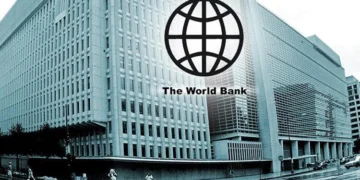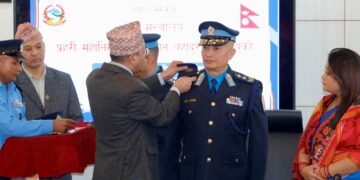Pokhara – In a significant development for Nepal’s aviation sector, Pokhara International Airport is set to operate its first-ever commercial chartered flight to Chengdu, China, on Tuesday. Despite the long-standing demand from the local community and collaborative efforts between the government and private sector, the airport has struggled to establish regular international flights since its inauguration two years ago.
Sichuan Airlines will transport 126 passengers on this inaugural flight, marking a milestone for the airport. However, the sustainability of regular operations remains uncertain. The airline has scheduled three chartered flights from Chengdu as part of a feasibility assessment before deciding on a potential long-term commitment.
Doubt Over Regular International Operations
While the chartered flights are a step forward, concerns persist regarding the viability of sustained international connectivity. Sichuan Airlines has indicated that regular flights could be introduced following the completion of these trial runs, but no definitive commitment has been made. The uncertainty stems from unclear passenger demand, raising doubts about the future of the airport’s international operations.
Adding to the skepticism, despite China’s involvement in constructing the airport, Beijing has yet to demonstrate a strong interest in facilitating commercial flights. This lack of engagement raises critical questions about the long-term sustainability of Pokhara International Airport.
Financial Burden and Rising Debt
Built with a substantial loan of approximately NPR 22 billion from China’s EXIM Bank, Pokhara International Airport is now facing financial strain. With limited international flights, revenue generation remains minimal, leading to concerns about loan repayment. The airport has barely managed to generate NPR 4 million from international flights, with a significant portion of that revenue coming from a single Bhutanese airline, Druk Air.
Meanwhile, the Civil Aviation Authority of Nepal (CAAN) has already paid NPR 950 million in interest and commitment fees. However, it has failed to meet its last scheduled payment, raising fears that the airport may become an economic burden rather than a strategic asset. To cover these obligations, CAAN has been using revenue from other airports, further exacerbating concerns that Pokhara International Airport could turn into a financial liability for the country.
Chartered Flights and Future Prospects
For the current chartered flights, Sichuan Airlines has set a ticket price of NPR 62,000 per passenger. Following these trial flights, the airline plans to introduce a structured fare system and flight schedule if the demand proves sustainable.
The first chartered flight was made possible through collaborative efforts led by Pokhara Tourism Council, private tourism entrepreneurs, Pokhara Metropolitan City, the Chinese Embassy in Nepal, Sichuan Airlines, and the Chinese Association in Nepal. China Travels International Chengdu is also supporting the initiative, with expectations that around 1,250 Chinese tourists will arrive in Pokhara over the next three months.
A delegation comprising Pokhara’s Mayor Dhanraj Acharya, Gandaki Province Tourism Board Chief Maniraj Lamichhane, Pokhara Tourism Year 2025 Task Force Coordinator Gopi Bahadur Bhattarai, Pokhara Tourism Council President Taranath Pahari, tourism entrepreneurs, and journalists will accompany the first flight. The team will engage in a seven-night, eight-day program focusing on tourism development in key Chinese cities, including Chengdu, Luzhou, Emei, Leshan, and Chongqing.
Additionally, Nepal Tourism Board, in collaboration with the Nepali Consulate General in Chengdu, is organizing promotional events titled “Nepal Evening” and “Sales Mission” on March 19 and 22 in Chengdu and Chaoxing, respectively.
A Strategic Turning Point or a Costly Miscalculation?
The launch of chartered flights presents both an opportunity and a challenge for Pokhara International Airport. If successful, it could pave the way for regular international flights and strengthen Nepal’s tourism industry. However, if passenger demand remains weak, the airport may struggle to justify its massive investment.
With rising debt and uncertain prospects, Nepal’s aviation authorities must navigate a delicate balance between optimism and financial pragmatism. The coming months will be critical in determining whether Pokhara International Airport emerges as a gateway to global connectivity or remains a high-stakes gamble for Nepal’s economy.





















